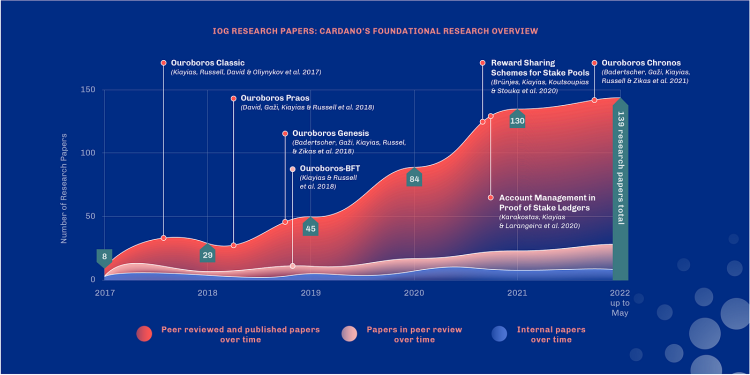Cardano, represented by its cryptocurrency ADA, is a blockchain platform that stands out for its scientific philosophy and peer-reviewed development process. Created by Charles Hoskinson, one of the co-founders of Ethereum, Cardano aims to provide a more secure, scalable, and sustainable platform for decentralized applications (DApps) and smart contracts. This article delves into the unique aspects of Cardano, its underlying technology, and its potential impact on the blockchain landscape.
The Origins of Cardano
Cardano was launched in 2017 by Input Output Hong Kong (IOHK), a technology company led by Charles Hoskinson. The platform was named after Gerolamo Cardano, a Renaissance mathematician, while its cryptocurrency ADA was named in honor of Ada Lovelace, a 19th-century mathematician considered the first computer programmer.
Scientific Philosophy
One of Cardano’s distinguishing features is its commitment to a research-driven approach. The development team consists of engineers and academic experts who conduct extensive research and peer review before implementing any changes. This rigorous process aims to ensure that the platform is built on a solid foundation, reducing the risk of bugs and vulnerabilities.
Key Components of Cardano
Cardano’s architecture is designed to address the limitations of earlier blockchain platforms like Bitcoin and Ethereum. Its key components include:
- Ouroboros Proof-of-Stake (PoS) Protocol: Unlike Bitcoin’s energy-intensive proof-of-work (PoW) system, Cardano uses Ouroboros, a PoS protocol that selects validators based on the number of ADA tokens they hold and are willing to stake. This mechanism is more energy-efficient and promotes decentralization.
- Layered Architecture: Cardano’s architecture consists of two main layers:
- Cardano Settlement Layer (CSL): Handles the cryptocurrency transactions, ensuring security and efficiency.
- Cardano Computation Layer (CCL): Manages the execution of smart contracts and DApps, providing flexibility and scalability.
Plutus and Marlowe: Plutus is Cardano’s smart contract development language, designed for security and ease of use. Marlowe is a domain-specific language for financial contracts, enabling developers to create sophisticated financial DApps.
Cardano’s Ecosystem and Use Cases
Cardano’s ecosystem is diverse, aiming to support a wide range of applications across various industries:
- Decentralized Finance (DeFi): Cardano provides a platform for DeFi applications, enabling decentralized lending, borrowing, and trading of digital assets.
- Identity Management: Cardano’s Atala PRISM project focuses on creating secure and verifiable digital identities, which can be used for access to financial services, education, and government programs.
- Supply Chain Management: Cardano’s blockchain can be used to enhance transparency and traceability in supply chains, ensuring the authenticity and origin of products.
- Governance: Cardano’s governance model allows ADA holders to participate in the decision-making process, voting on proposals for network upgrades and changes.
ADA – Cardano’s Native Cryptocurrency
ADA is the native cryptocurrency of the Cardano platform, serving multiple purposes within the ecosystem:
- Staking: ADA holders can stake their tokens to participate in the network’s consensus process and earn rewards.
- Transactions: ADA is used to pay for transactions and computational services on the Cardano network.
- Governance: ADA enables holders to vote on governance proposals, influencing the future direction of the platform.
Challenges and Criticisms
Despite its innovative approach, Cardano faces several challenges:
- Competition: Cardano competes with other smart contract platforms like Ethereum, Binance Smart Chain, and Polkadot, all vying for market share in the DeFi and DApp space.
- Development Speed: The research-driven approach, while thorough, can result in slower development and implementation compared to more agile projects.
- Adoption: The success of Cardano depends on the adoption of its platform by developers, businesses, and users, which is still in progress.
Future Developments
Cardano has a well-defined roadmap, with several key phases aimed at enhancing its capabilities:
- Byron: The initial phase focused on establishing the network and ensuring basic functionality.
- Shelley: Introduced the PoS consensus mechanism, enabling decentralization and staking.
- Goguen: Focuses on smart contract capabilities, bringing DApps to the platform.
- Basho: Aims to improve scalability and interoperability, ensuring the network can handle increased usage.
- Voltaire: Will introduce a fully decentralized governance system, empowering ADA holders to make decisions about the network’s future.
Cardano represents a significant advancement in blockchain technology, combining rigorous academic research with innovative design to create a scalable, secure, and sustainable platform. As it continues to develop and expand its ecosystem, Cardano has the potential to become a leading player in the world of decentralized applications and financial services. Its unique approach and ambitious roadmap make it a project worth watching in the evolving cryptocurrency landscape.










